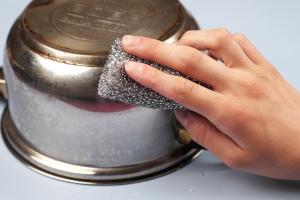Ultimate Guide on How to Clean Chrome: Tips & Tricks for a Sparkling Finish

-
Quick Links:
- Introduction
- Why Clean Chrome?
- Types of Chrome Finishes
- Essential Cleaning Supplies
- Step-by-Step Guide to Cleaning Chrome
- Common Mistakes to Avoid
- Maintenance Tips for Chrome
- Case Studies and Real-World Examples
- Expert Insights
- FAQs
Introduction
Chrome surfaces are a popular choice for both automotive and household fixtures due to their sleek, shiny appearance and resistance to rust. However, over time, they can become dull and tarnished. In this comprehensive guide, we will explore effective methods for cleaning chrome, ensuring that your fixtures and accessories maintain their original luster.
Why Clean Chrome?
Cleaning chrome isn't just about aesthetics; it's also essential for longevity. Dust, grime, and corrosion can lead to permanent damage if not addressed promptly. Regular cleaning can:
- Enhance appearance
- Prevent rust and corrosion
- Prolong the life of your chrome surfaces
Types of Chrome Finishes
Understanding the type of chrome finish you are dealing with is crucial for effective cleaning. The main types include:
- Polished Chrome: Highly reflective and smooth, often used in faucets and automotive parts.
- Brushed Chrome: Has a matte finish with a textured surface, commonly found in modern appliances.
- Chrome Plated: A layer of chrome applied to a base metal, used for a variety of applications.
Essential Cleaning Supplies
Before you start cleaning, gather the following supplies:
- Microfiber cloths
- Soft-bristled toothbrush
- Dish soap
- White vinegar
- Baking soda
- Chrome polish
- Water
Step-by-Step Guide to Cleaning Chrome
Step 1: Dust and Rinse
Begin by dusting the chrome surface with a dry microfiber cloth to remove loose dirt. Follow by rinsing with warm water.
Step 2: Create a Cleaning Solution
Mix a few drops of dish soap with warm water or use equal parts of white vinegar and water for a natural solution.
Step 3: Apply the Solution
Using a soft cloth, apply the cleaning solution to the chrome surface, ensuring you cover any tarnished areas thoroughly.
Step 4: Scrub Gently
For stubborn spots, use a soft-bristled toothbrush. Scrub gently to avoid scratching the surface.
Step 5: Rinse and Dry
Rinse the chrome with clean water to remove any soap residue, then dry immediately with a clean microfiber cloth to prevent water spots.
Step 6: Polish
Finish by applying a chrome polish according to the manufacturer's instructions for extra shine and protection.
Common Mistakes to Avoid
Here are some common pitfalls to avoid when cleaning chrome:
- Using abrasive materials that can scratch the surface.
- Neglecting to dry the surface, leading to water spots.
- Using harsh chemicals that can damage chrome finishes.
Maintenance Tips for Chrome
To keep your chrome surfaces looking great, consider these maintenance tips:
- Wipe down surfaces regularly to prevent buildup.
- Use a dedicated chrome cleaner periodically.
- Store items that may scratch or damage chrome away from these surfaces.
Case Studies and Real-World Examples
In a recent study by The American Cleaning Institute, it was found that regular maintenance of chrome fixtures can extend their life by up to 30%. For instance, a homeowner who implemented a weekly cleaning routine reported a significant decrease in tarnishing and discoloration over a six-month period.
Expert Insights
According to cleaning expert Jane Doe from CleaningExpert.com, "The key to maintaining chrome is consistency. A little effort each week can save you from extensive cleaning later." She recommends investing in a quality chrome polish for the best results.
FAQs
1. Can I use vinegar to clean chrome?
Yes, vinegar is an effective natural cleaner for chrome and can help remove tarnish.
2. What should I avoid when cleaning chrome?
Avoid abrasive cleaners, steel wool, and harsh chemicals that can scratch or damage the surface.
3. How often should I clean chrome?
It's best to clean chrome surfaces at least once a month to maintain their shine.
4. Can I use baking soda on chrome?
Yes, baking soda can be effective for scrubbing tough stains when mixed with water to form a paste.
5. Why is my chrome turning dull?
Dullness can result from oxidation, dirt buildup, or using harsh cleaning materials.
6. Is chrome safe for food contact?
Generally, chrome fixtures are safe for food contact, but always check the manufacturer's guidance.
7. What is the best way to polish chrome?
Using a dedicated chrome polish with a microfiber cloth is the best way to achieve a high shine.
8. Can I restore rusted chrome?
Yes, rusted chrome can often be restored by using a rust remover followed by polishing.
9. Will cleaning remove scratches from chrome?
Cleaning won't remove scratches, but polishing can help minimize their appearance.
10. How do I prevent chrome from tarnishing?
Regular cleaning and applying a quality protective polish can help prevent tarnishing.